25 Tips for Picky Eaters – Part 5: Don’t Make It a Battle
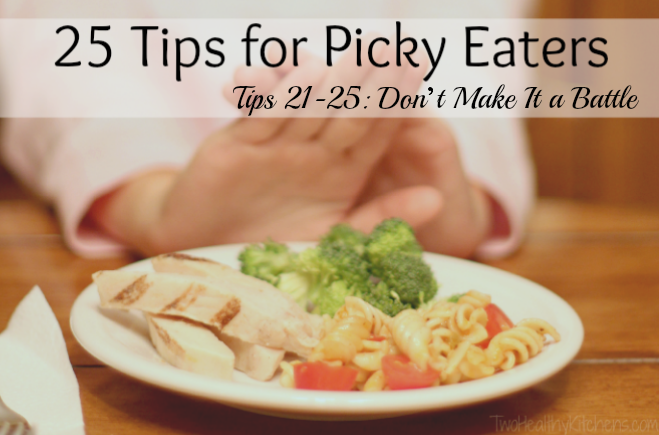
We’re armed with a master’s degree in nutrition, hundreds of hours of culinary classes, and oodles of research on parenting picky eaters.
But do you know where we put all that knowledge to the test? In our own kitchens, at our own tables, with our own kids. We’re right in the trenches with you on this one, friends, and we feel your pain!
In this five-part series, we’re sharing our top tips for navigating this tough parenting challenge. Adapt these ideas in ways that work for you and your family – the ages of your children, the ways you normally eat, and how you like to parent and teach your kids. Not every strategy will resonate with everyone – choose what’s right for you!
In our final post of this series, tips #21-25 are aimed at defusing mealtime power struggles. When food results in constant battles, it just isn’t fun, and it’s not going to help your kids to develop healthy attitudes about eating. Here are some ideas to help ease those stand-offs:
21) Give Your Kids As Much Power and Choice As You Can
Whenever possible, give your kiddos options and stack the deck favorably to help everyone emerge from mealtime feeling like a winner.
Imagine how your kids must feel when unknown foods suddenly appear, along with an order to EAT! Probably pretty powerless and unhappy. Nobody likes to feel backed into a corner!
When kids feel like they have input and some measure of control, they’re a lot more willing to cooperate and keep things civil.
In Part 2 of this series, we offered advice on getting your little ones more involved in the process of planning and preparing meals. That’s a great first step in helping them feel that they’ve got some control. Next, try to give them options to help them feel empowered at the table, as well.
Offer choices where everybody wins.

Still the same meal! They have more control, and everybody wins!
For example, you could say, “Would you like your spaghetti and meatballs served together and all topped with marinara the way Mommy and Daddy like it, or do you want everything served separately?” Or “Today, let’s have fruit with lunch. Can you help me choose? Should we have those fresh, yummy grapes we bought at the store yesterday, or should we go for apple wedges?”
Similarly, if you know veggies are always a tough sell at mealtimes, you could offer several different vegetable options at dinner, and (maybe after a “no-thank-you bite“), ask each kiddo to choose one or two faves to pile on their plates. You’re giving your kids a choice of veggies, but no matter which they choose, everybody wins! Hurray!
Psssst … Sound ridiculous to prepare multiple veggies each night? Nah! At this stage in the game, any vegetable is a win, and they sure don’t have to come in the form of gourmet recipes! Don’t be afraid to use shortcuts like frozen, steam-in-bag vegetables. And don’t forget that things like marinara sauce and salsa are jam-crammed with veggie goodness that counts toward those daily vegetable servings!
22) Be Careful About “Clean Your Plate” Rules …
Kids often have a much better sense of when they’re full than we give them credit for. Respect that.
Sadly, as people age, we often lose touch with the natural triggers that tell us when we should stop eating. We get in the habit of mindlessly eating whatever’s in front of us or feeling guilty if we don’t “clean the plate.” That can lead to excess calorie consumption … not a great habit.
Instead, realize that on some days kids will simply be hungrier than on others, and at some meals they may not eat as much as at others. Work through some trial tastes or “no-thank-you bites“ and encourage your little ones to eat appropriate portions, but realize that sometimes they need to be empowered to let you know when they’ve had enough.
(BTW … this is a good reason to make sure they take those “no-thank-you bites” first, before they claim to be full!)
23) … And Watch Out for the After-Dinner Treat and Wheedled Desserts!
Kids are smart. We know that. They know that.
Do your kiddos ever say they’re too full to finish dinner, but then suddenly have enough room for a dessert or bedtime snack?
Uh-huh. Been there.
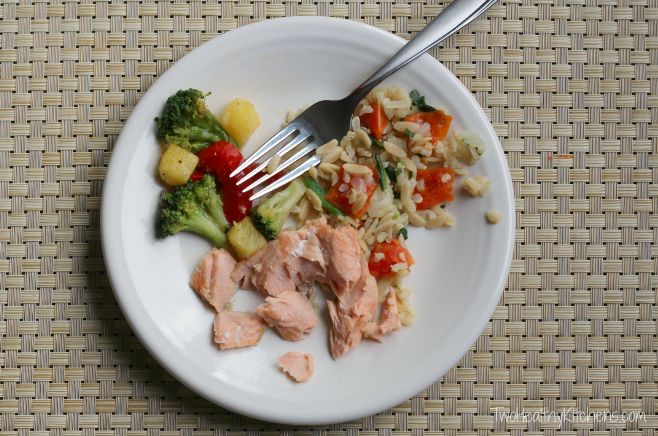
As we mentioned in the tip above, it’s important to respect a child’s true sense of “full.” But sometimes, that “fullness” can be confused with “tired of this flavor” or “tired of eating whatever mom made for dinner.”
This was a common scenario with Gretchen’s youngest daughter, who would claim to be too full to finish the meal, but then request a snack later. The solution? When her daughter asked for an evening snack after being too “full” for dinner, Gretchen learned to offer leftovers from dinner, instead of a fun snack or treat.
That accomplished two important things: First, her daughter was filling up on healthy foods, not unhealthy snacks. And, her daughter quickly learned that she couldn’t wheedle a bedtime snack or dessert after she was unable to eat her dinner.
Remember – this isn’t a battle. Keep it calm and logical. Help your kiddos get used to the idea that, if they’re too full to finish reasonable portions of their healthy dinner, then their bodies don’t have room for dessert or a late-night treat, either. That’s simple logic – not a power struggle. It’s also a great life lesson about keeping in touch with your body’s natural sense of “full.”
Also, when it comes to dessert, this logical approach to “fullness” has one other very important benefit. It keeps dessert from becoming a reward/punishment tool.
Dangling dessert over children’s heads as a reward, or threatening to withhold it as a punishment, can send a really problematic message: that desserts and sweets are more valuable or more desirable than other (usually healthier) foods.
24) Be Wary of Poorly Timed Snacks
Hunger often strikes right before mealtimes (as it should!), and kids start rummaging through the pantry, hunting for a quick nibble as dinner’s being prepared. But, when kids snack too close to mealtime, or even guzzle too many glasses of (healthy!) milk, they’re often not hungry once the meal’s ready.
Instead of letting your little ones fill up on snacks, and then battling over how much dinner they eat, try letting them “snack” on the meal you’re preparing. Chopping veggies for a stir-fry or fajitas? Maybe they’d like to munch on some of the carrot sticks or sliced peppers. Measuring out apple cubes for a dessert cobbler? Your kiddos could munch on an extra apple, cut into handy wedges.
Is your daughter just too ravenous to wait 10 more minutes for the full meal to be served to the entire family? Maybe she could get a little head start on her salad. Or, while everyone waits for the chicken to finish cooking, she could go ahead and dig into the steamed veggies and brown rice.
In the end, your kiddos have still eaten the meal you offered, even if the timing wasn’t exactly what you’d envisioned! Again, everybody wins!
25) Introduce New Foods Gradually
It can be overwhelming for little ones to be confronted with too many new foods all at once. Try just one or two at a time! (And remember that trick from Part 3 of using already-fave foods to help introduce new ones!)
Kids can also find it really disconcerting when favorite foods are suddenly replaced with other (kinda similar) products. Like … one day completely swapping a toddler’s whole milk for skim. Whoa – that’s a major change (and typically not popular)! That’s why you’re usually advised to make the transition slowly – maybe mixing whole milk with 2%, then completely stepping down to 2% … then 1% … then finally to skim.
A similar problem often occurs when parents make an all-encompassing decision to eat only whole grains. No doubt – that’s a great move. But, the texture and even the flavor of whole-grain foods are often quite different from products made with white flour.
Again, try adding the new foods (in this case, whole grains) gradually. Maybe initially toss just a handful of whole-wheat pasta in with your regular white pasta, and then slowly increase the proportion over time. Or, try making sandwiches with one slice of white bread and one slice of whole-grain bread. (Bonus points for fun shapes! Check out Part 3!) You get the idea! Little eaters may be more accepting of the change if it happens slowly.
Want more tips to help your kids become better eaters? Check out:
- Part 1: Getting Started
- Part 2: Getting the Kids Involved
- Part 3: It’s All About the Marketing
- Part 4: Succeeding at the Table
Disclaimer: These tips are just suggestions and may not be right for each child or each family. If you have concerns about your child’s eating habits or questions about nutrition, check with your pediatrician or a licensed dietician who’s familiar with your child’s specific needs.

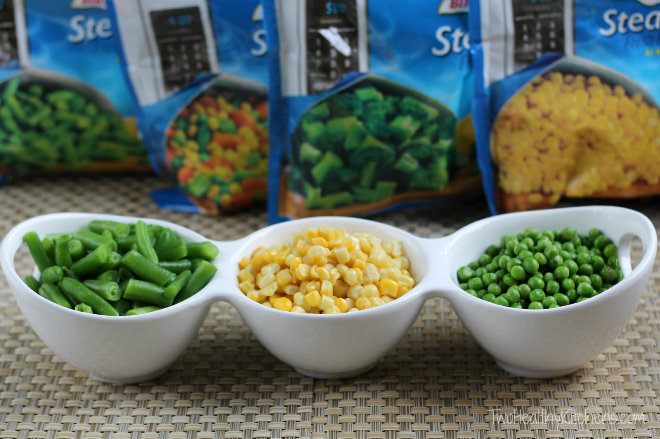
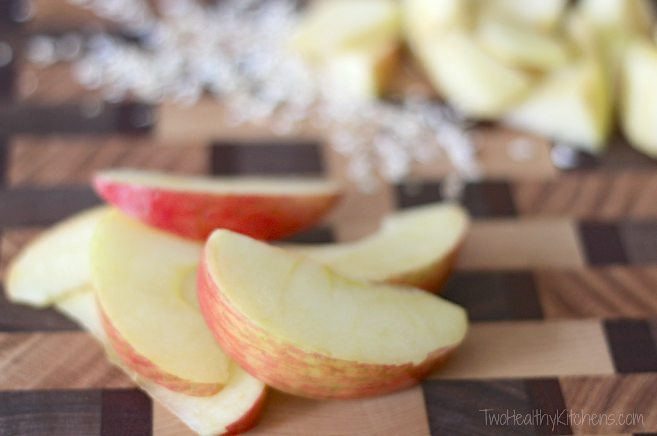
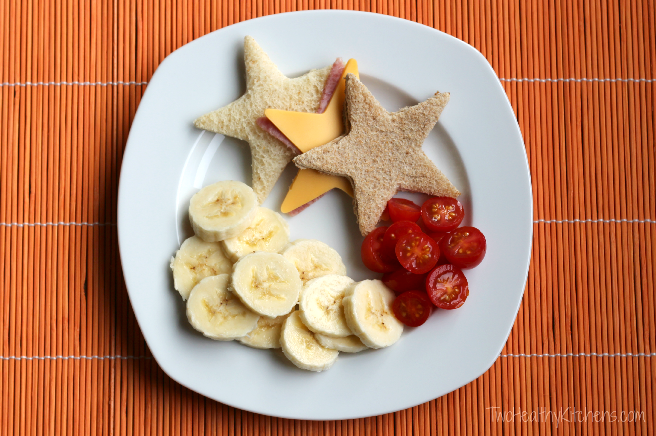
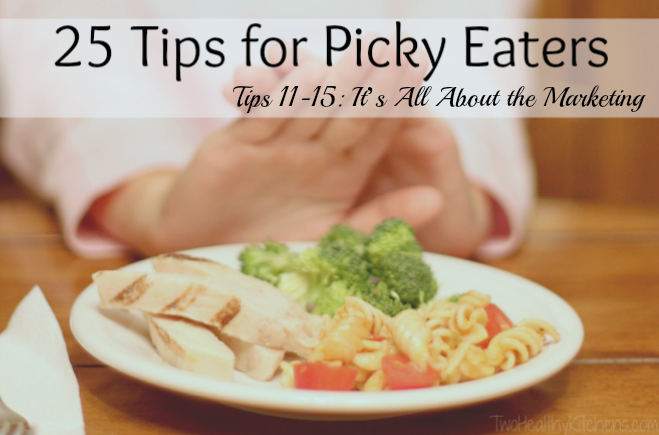
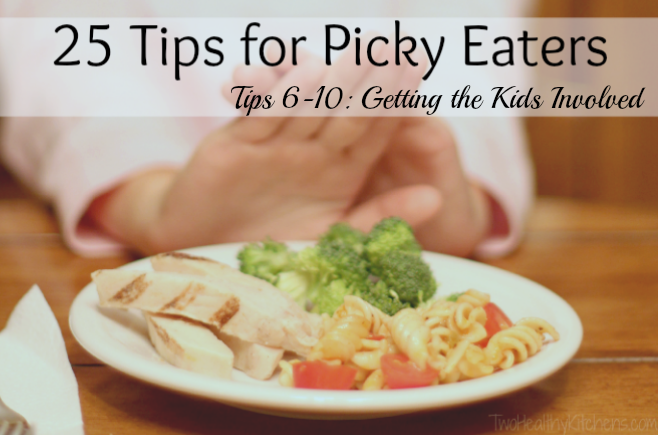
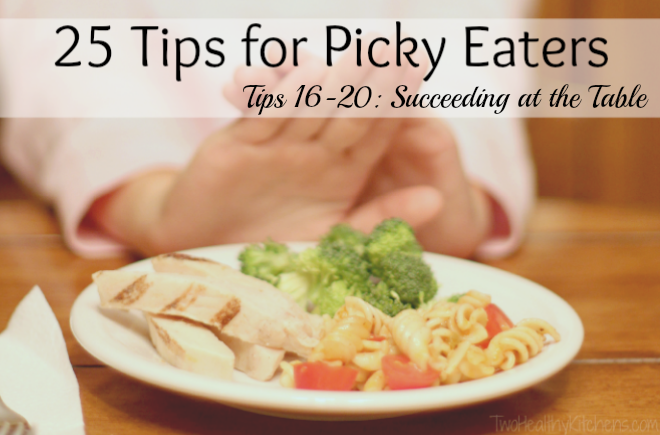
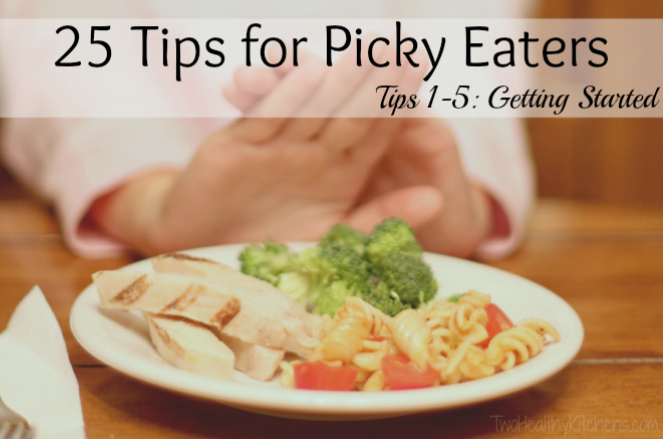
I totally agree here. I love these tips, they really apply to any family. I’ve had my share of kids wanting a snack right before the meal, and the I’m too full, then want a snack episodes. lol
On another note…The whole clean your plate concept really bothers me. Our bodies tell us when we have had enough. Why would you want to teach/force your kids to ignore and over-ride that natural response? If you teach your kids to listen to their bodies when they are young, they will carry that with them forever. 😀
We’re so totally on the same wavelength, Cindy! Thanks so much for your always-awesome and insightful comments! There are gonna be a lot of high schoolers out there who will be so fortunate to have you as their nutrition instructor! You have so much positive energy and a true passion for healthy eating – so much to share! 😀 ~G&S